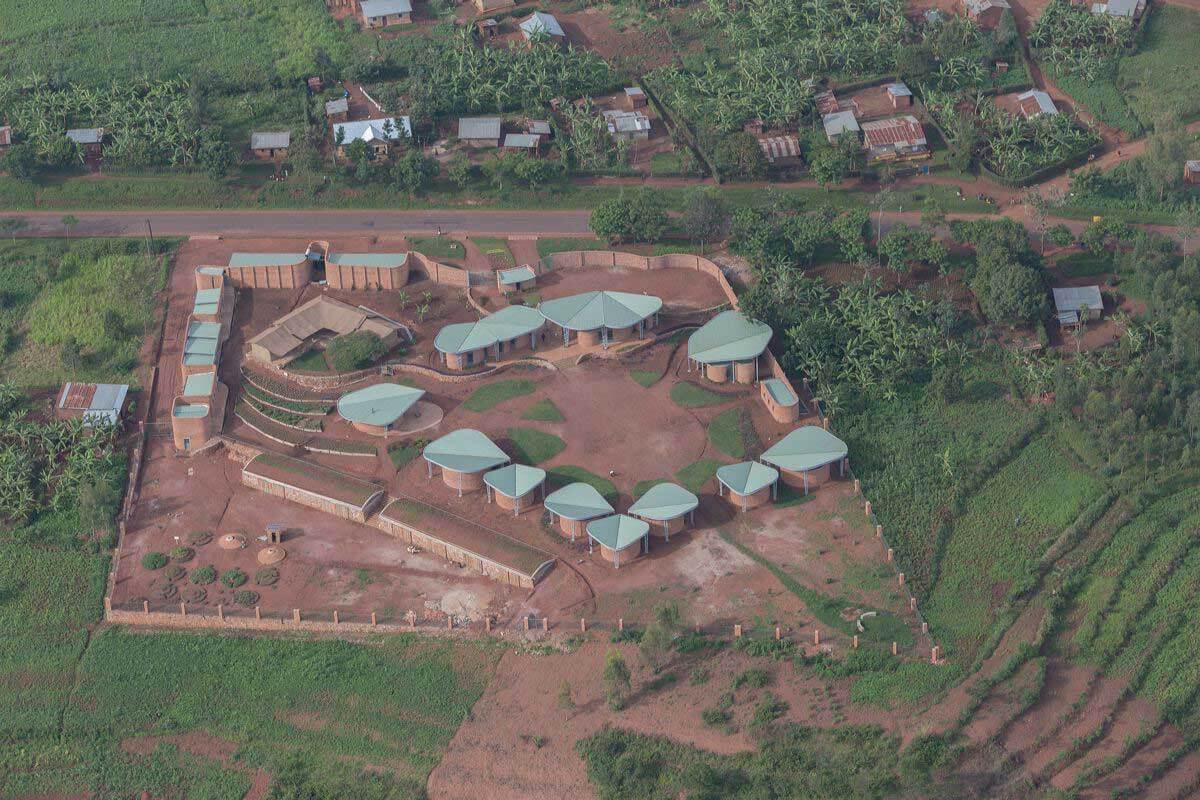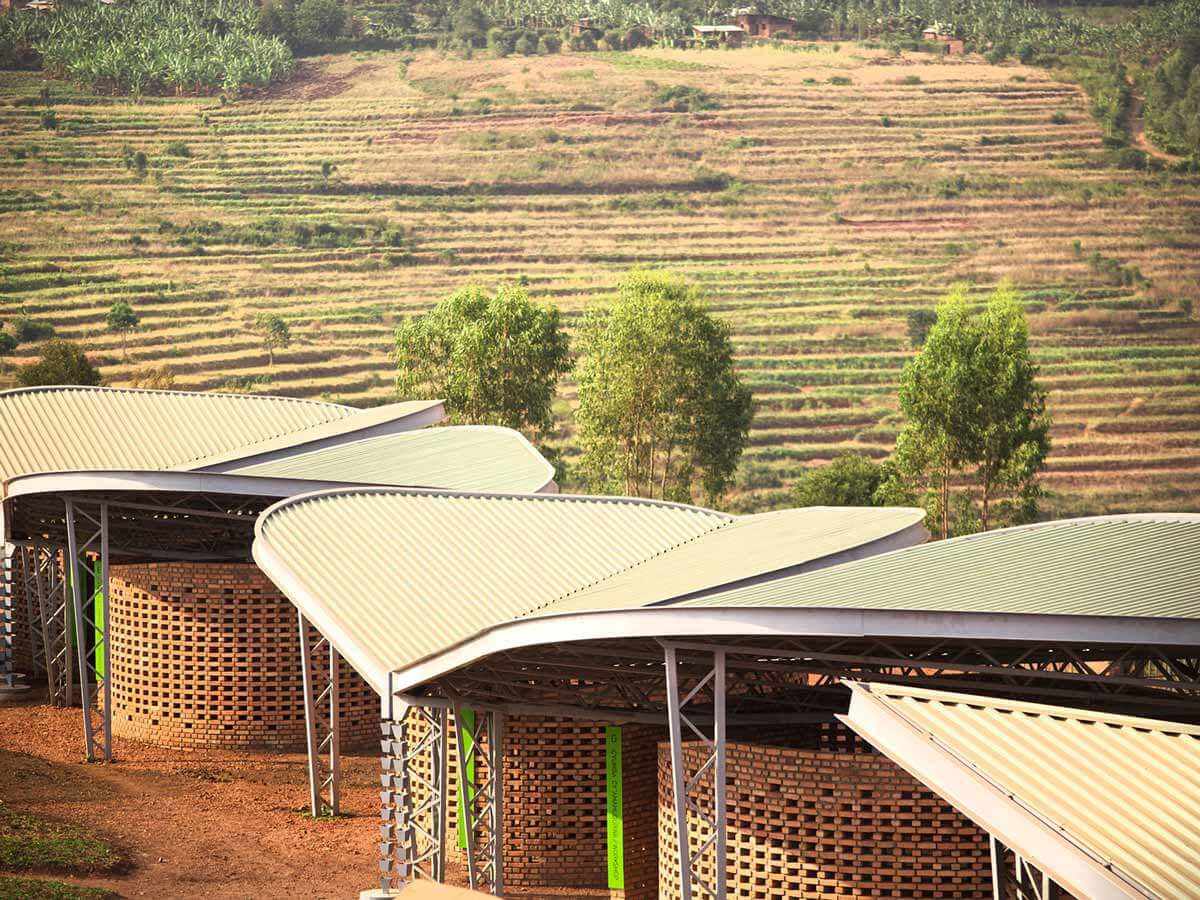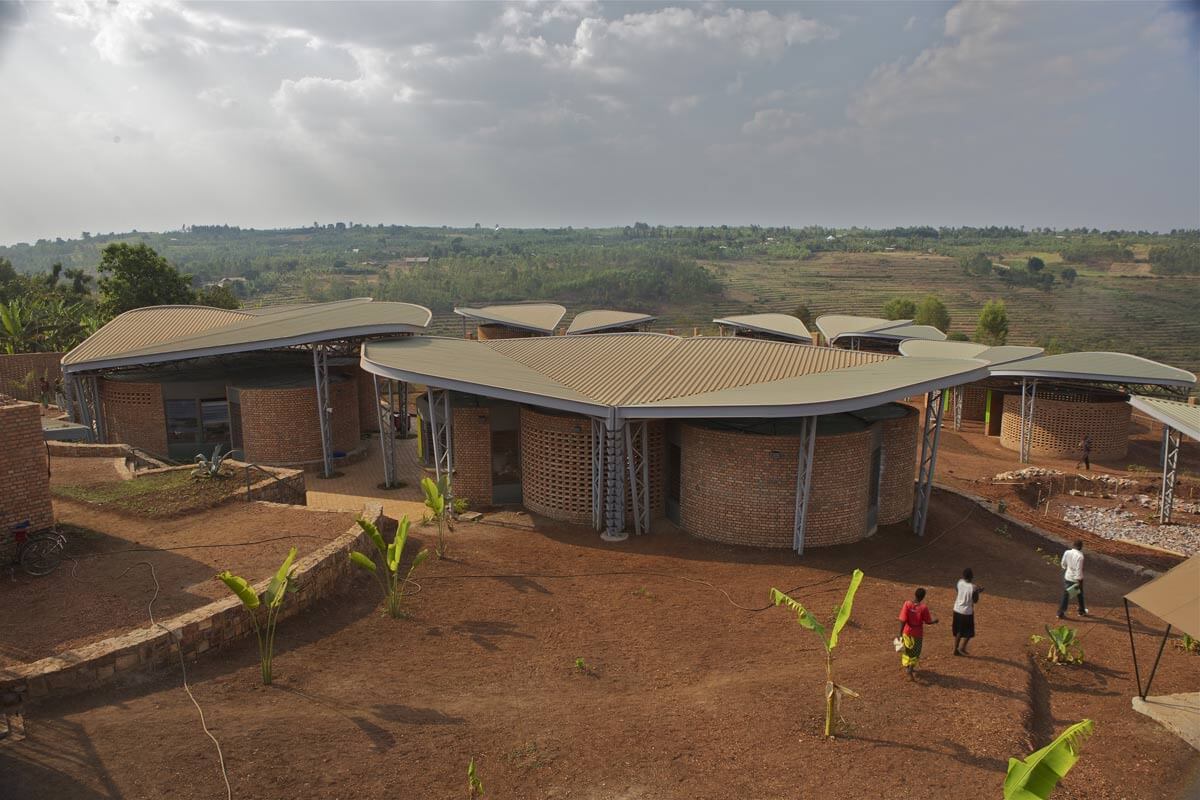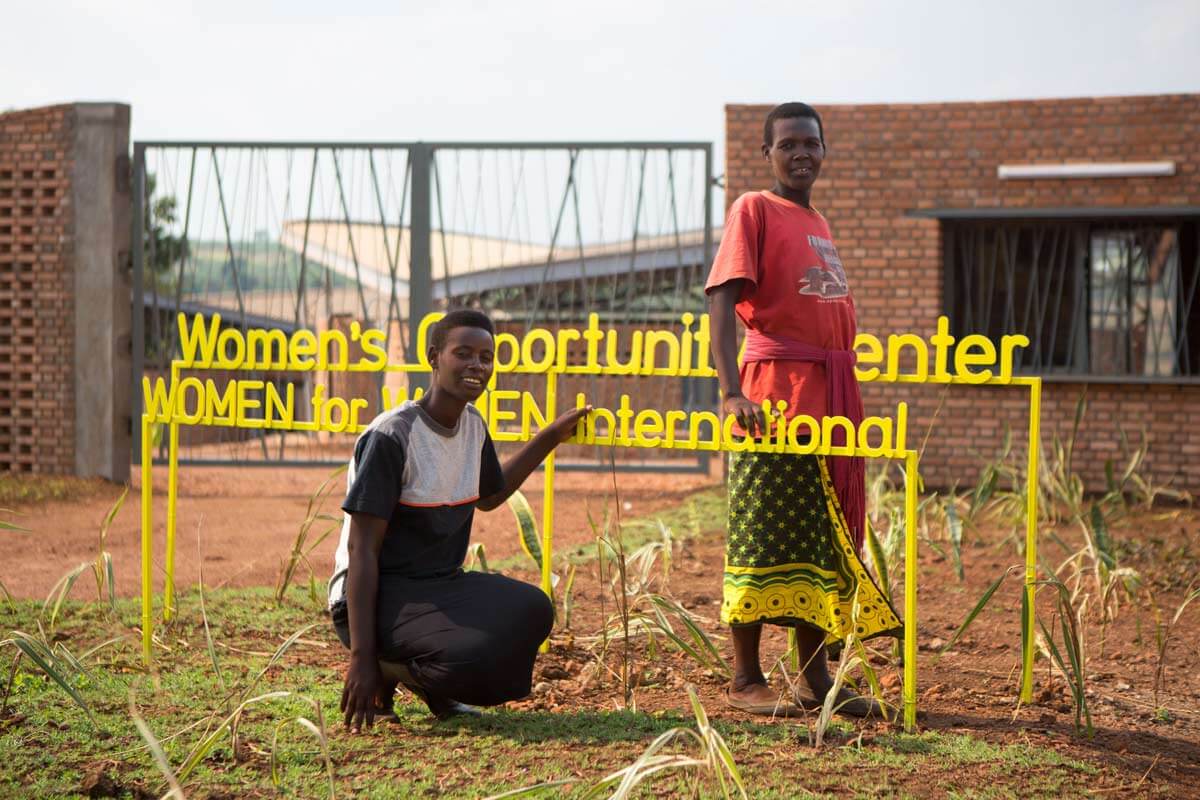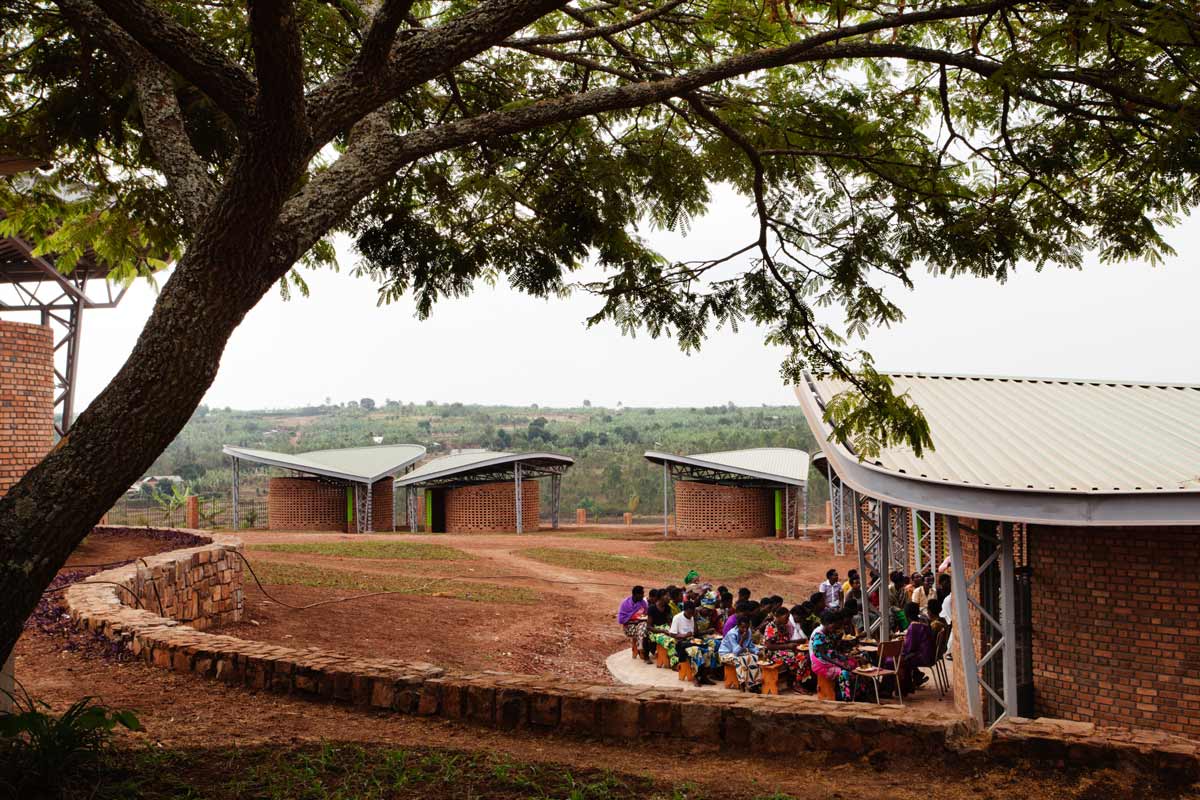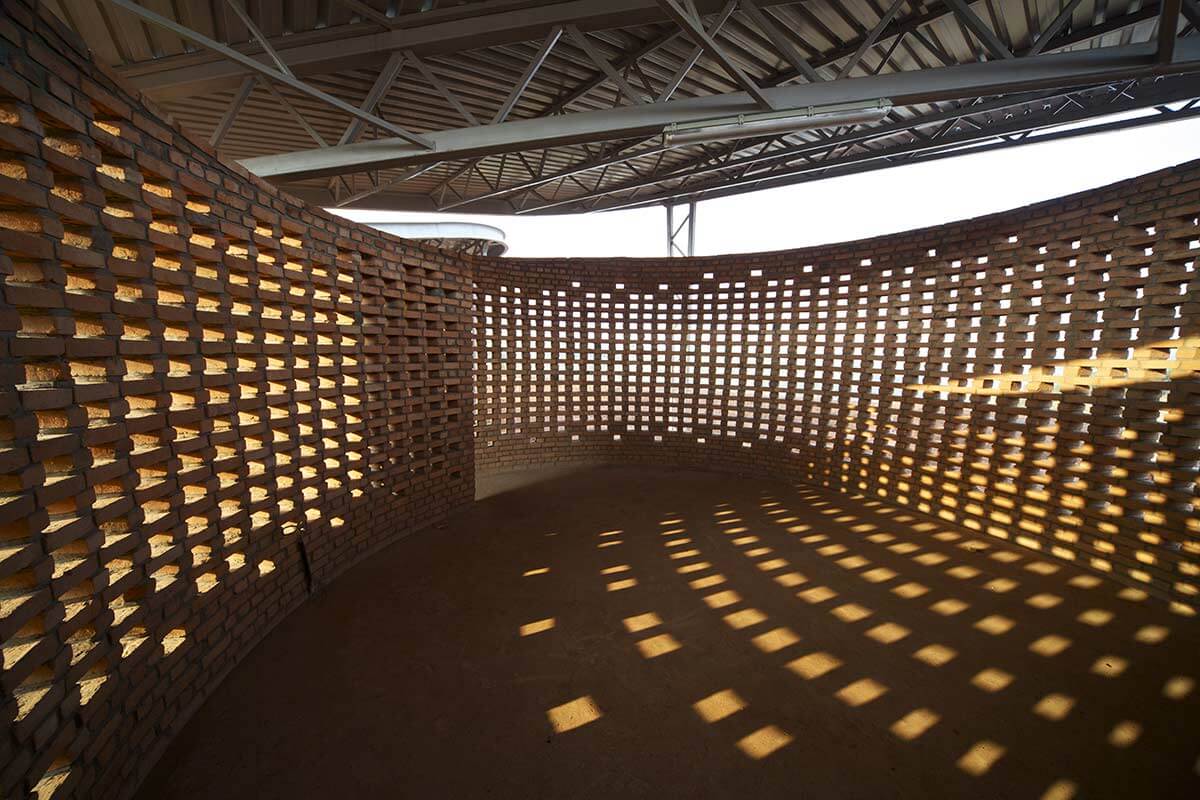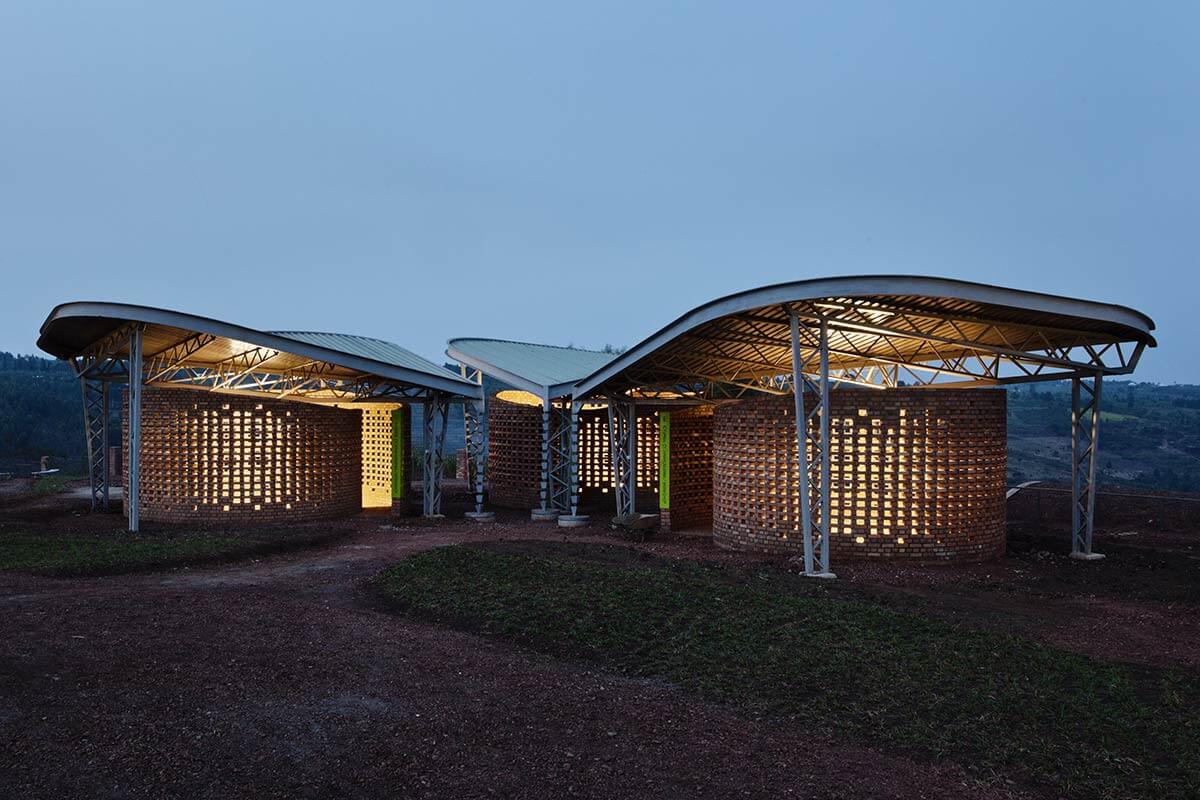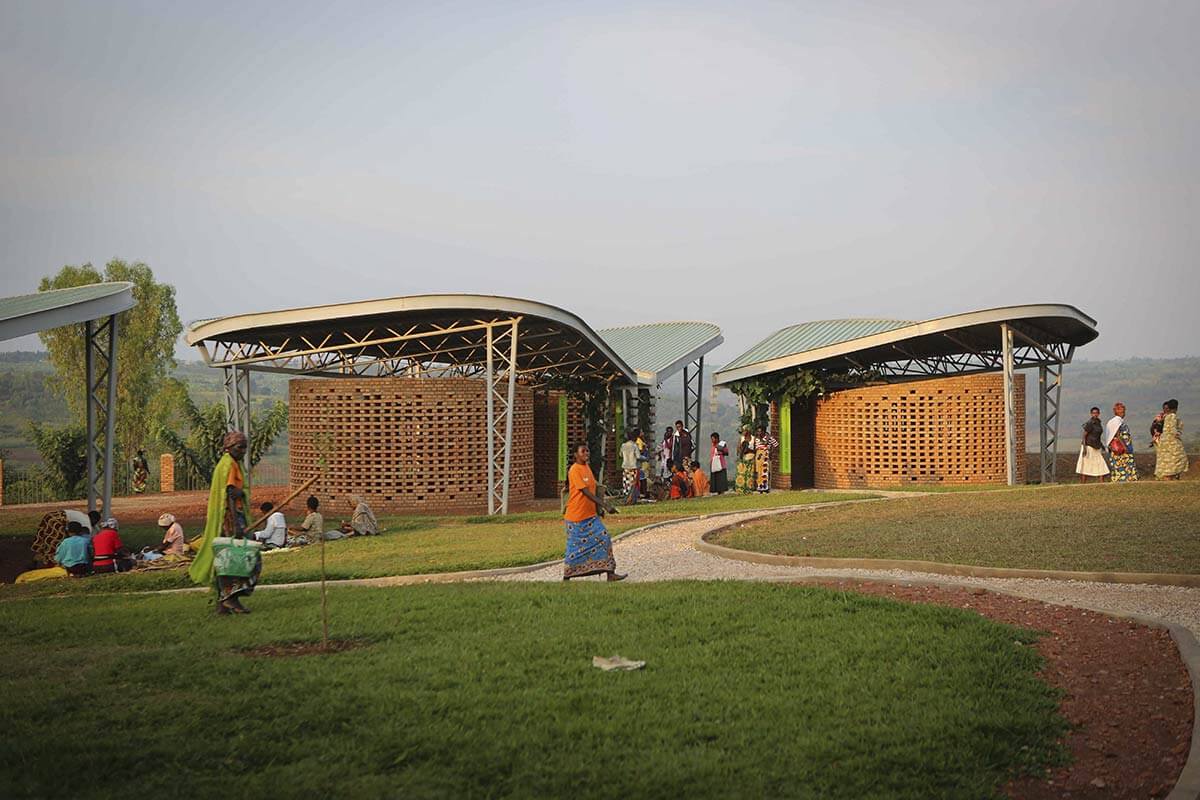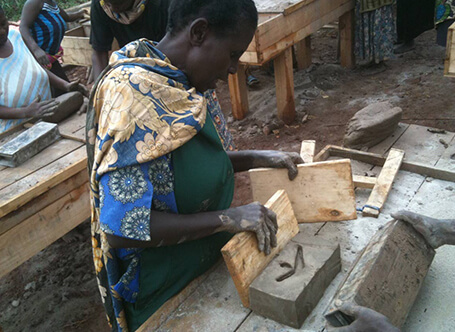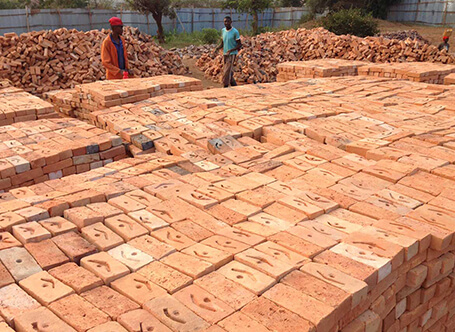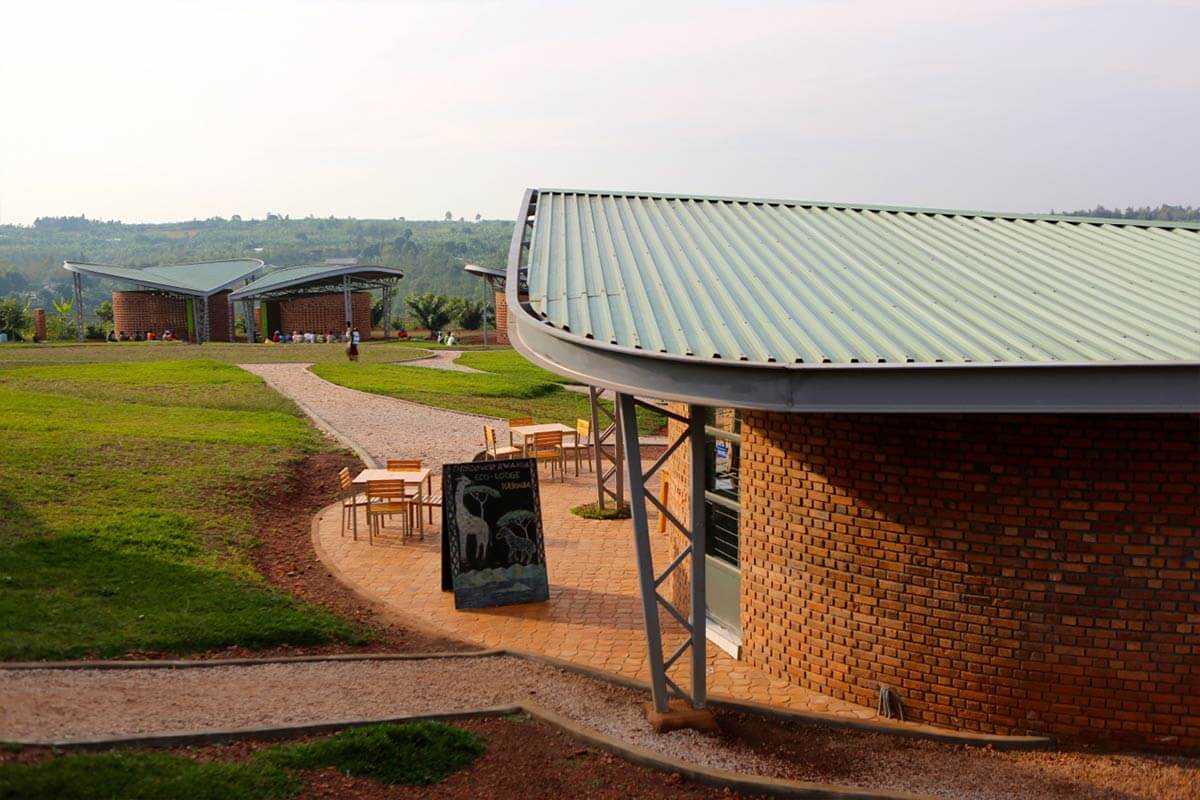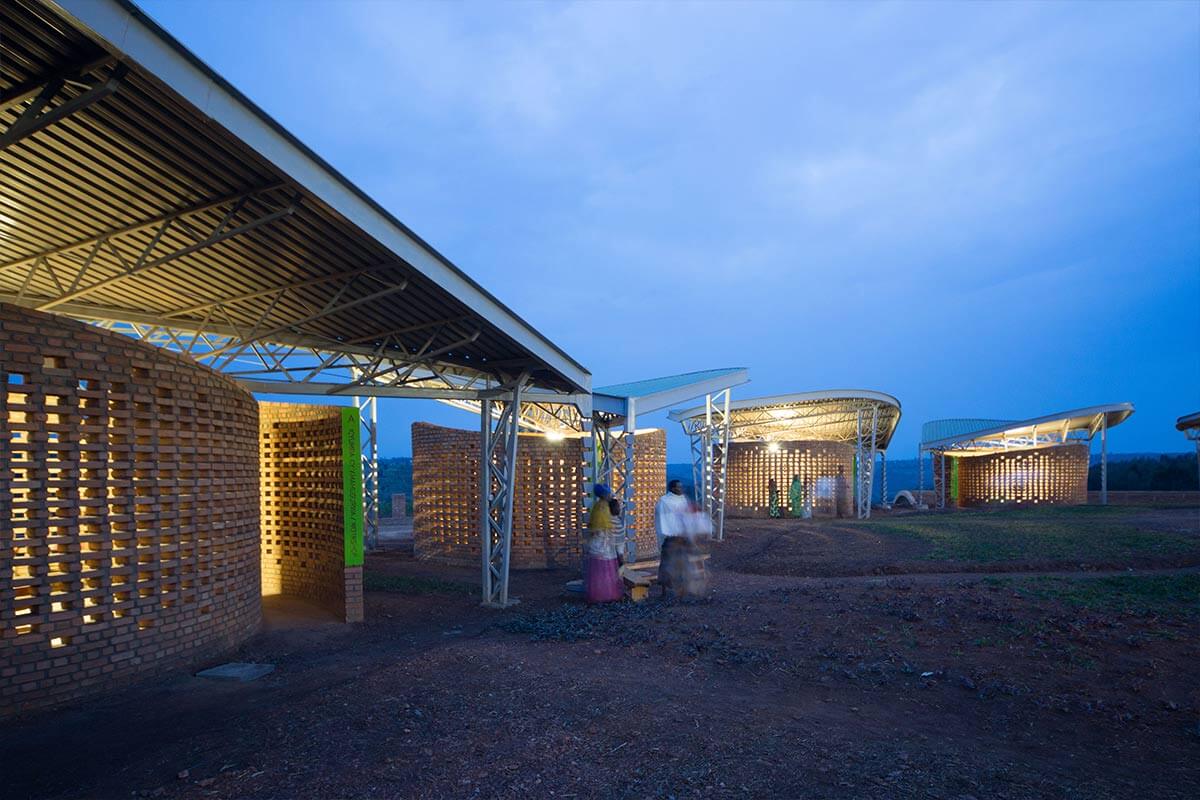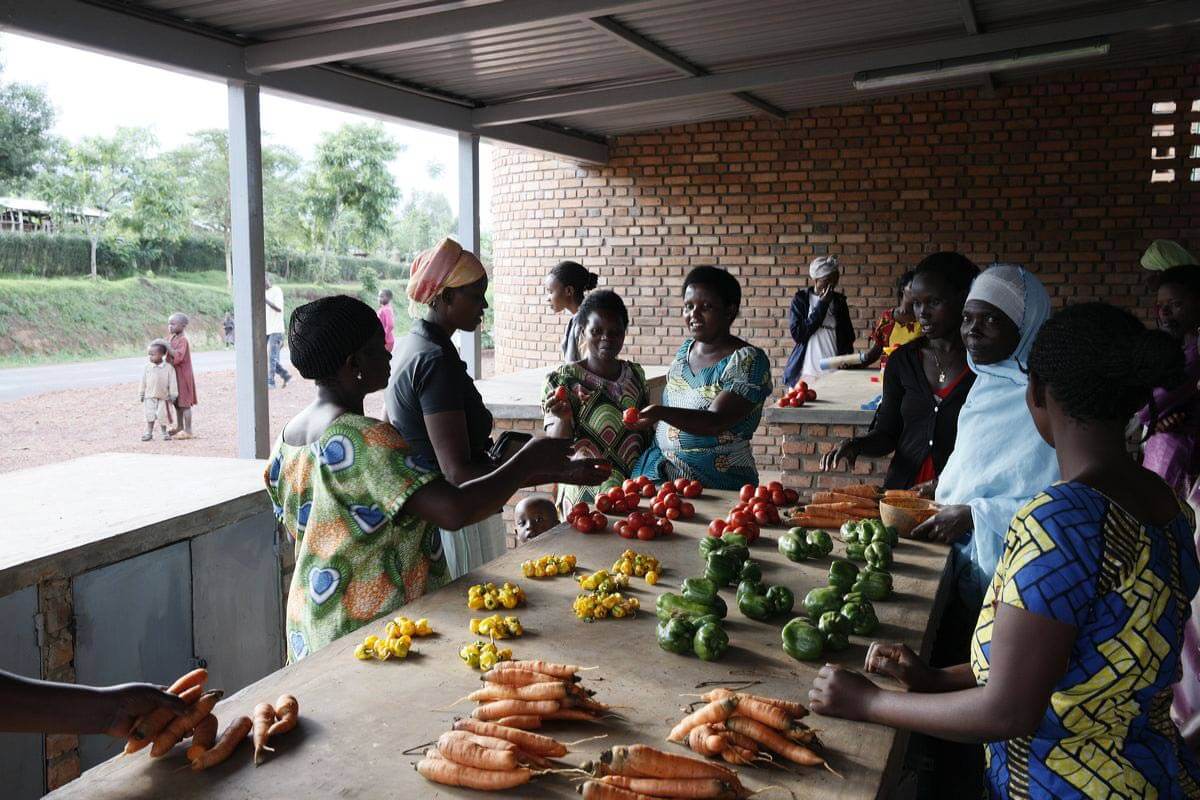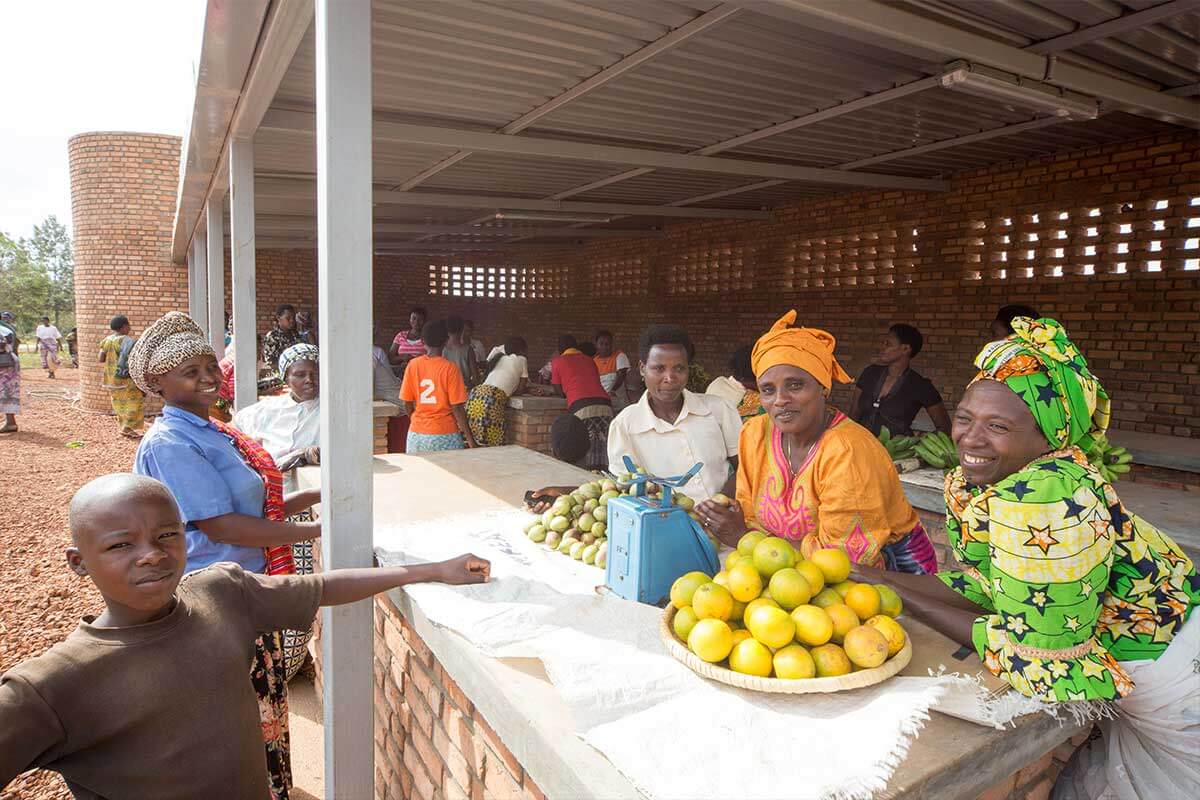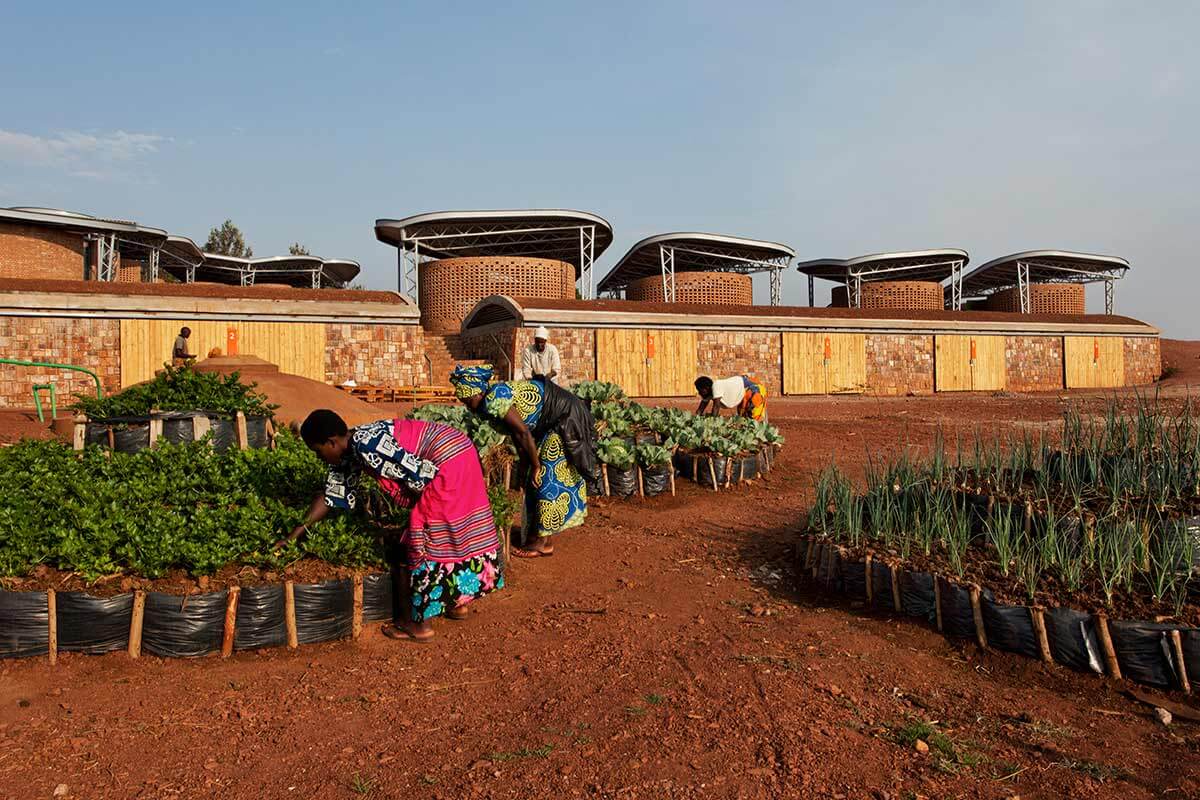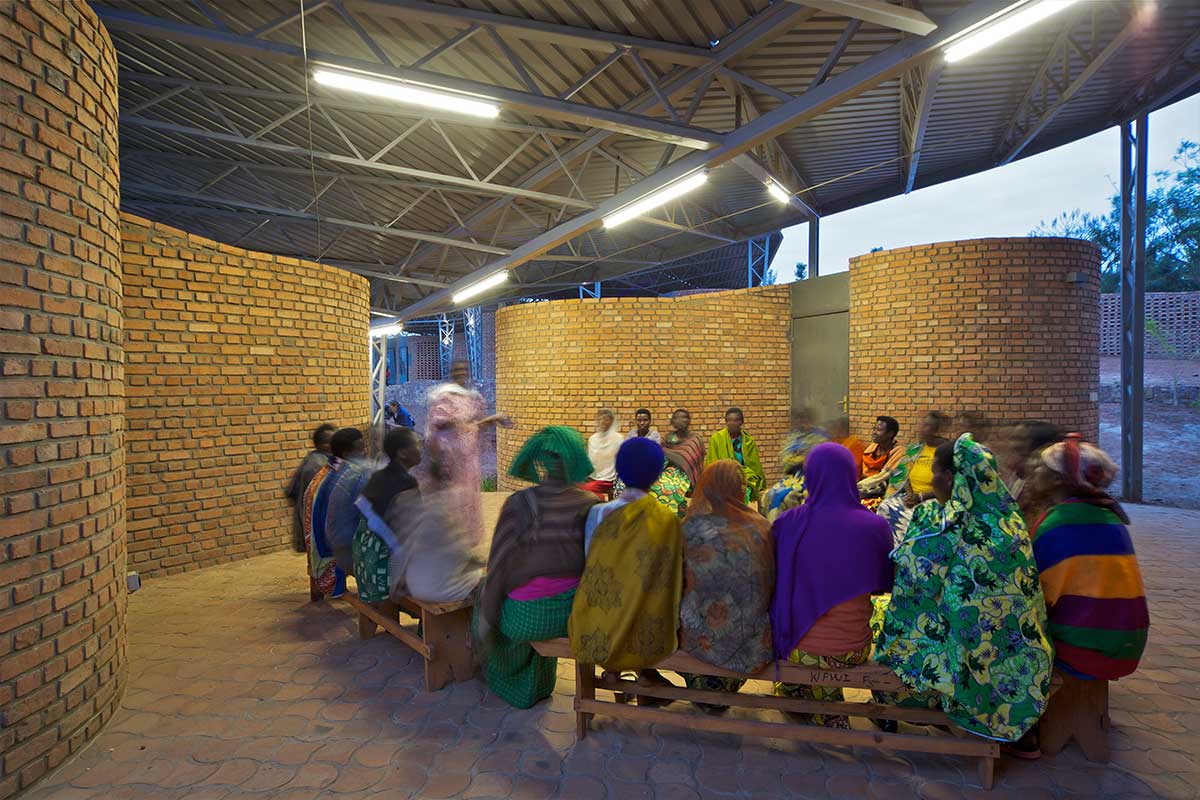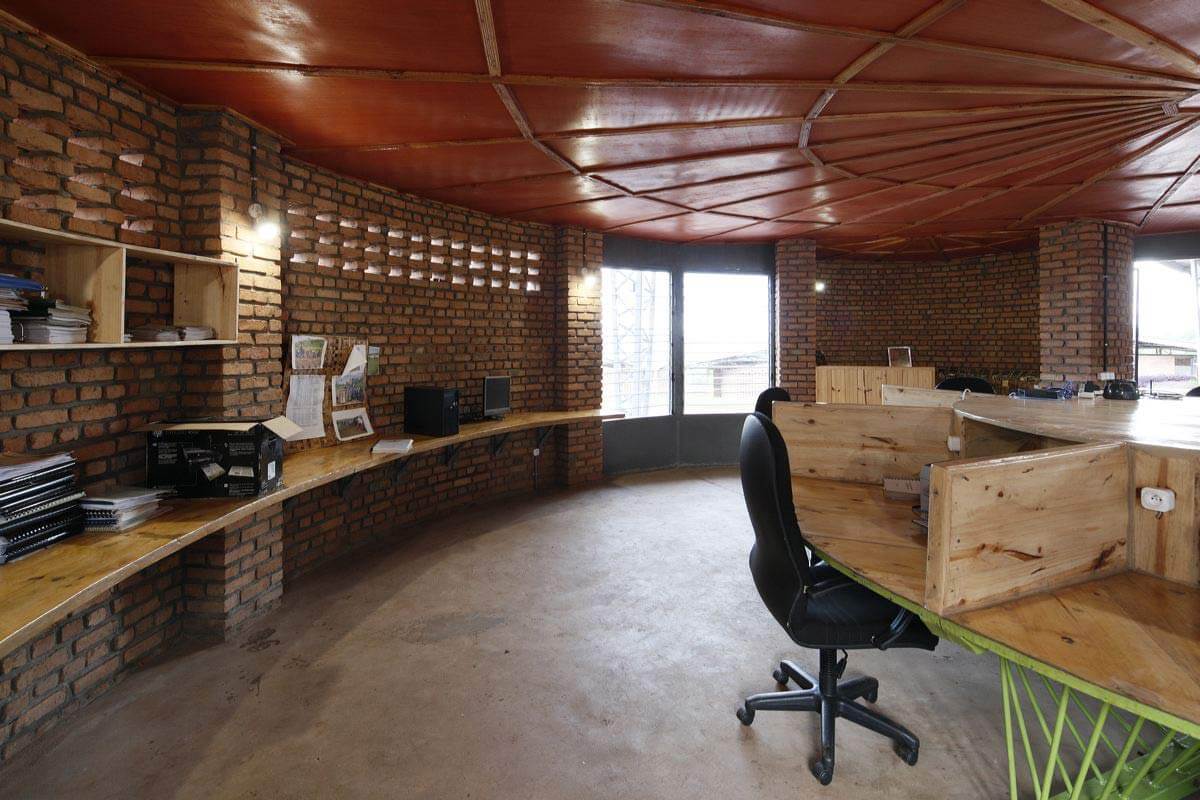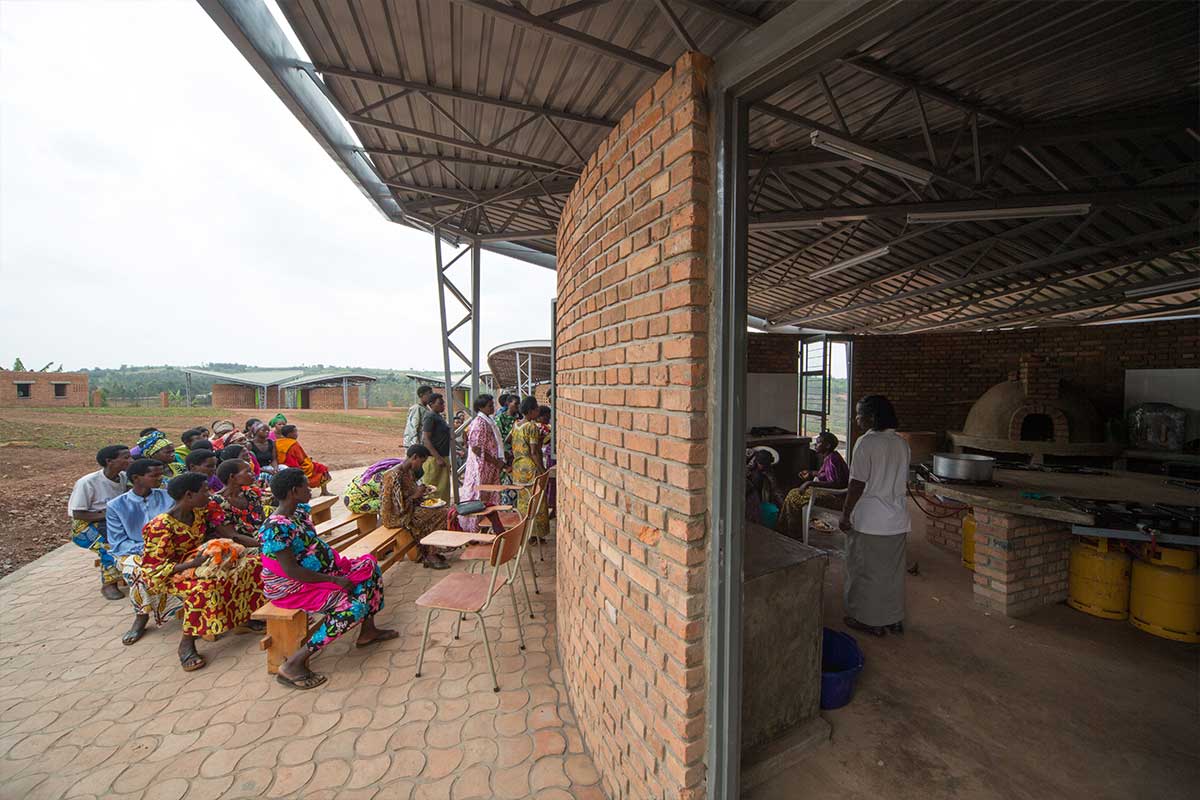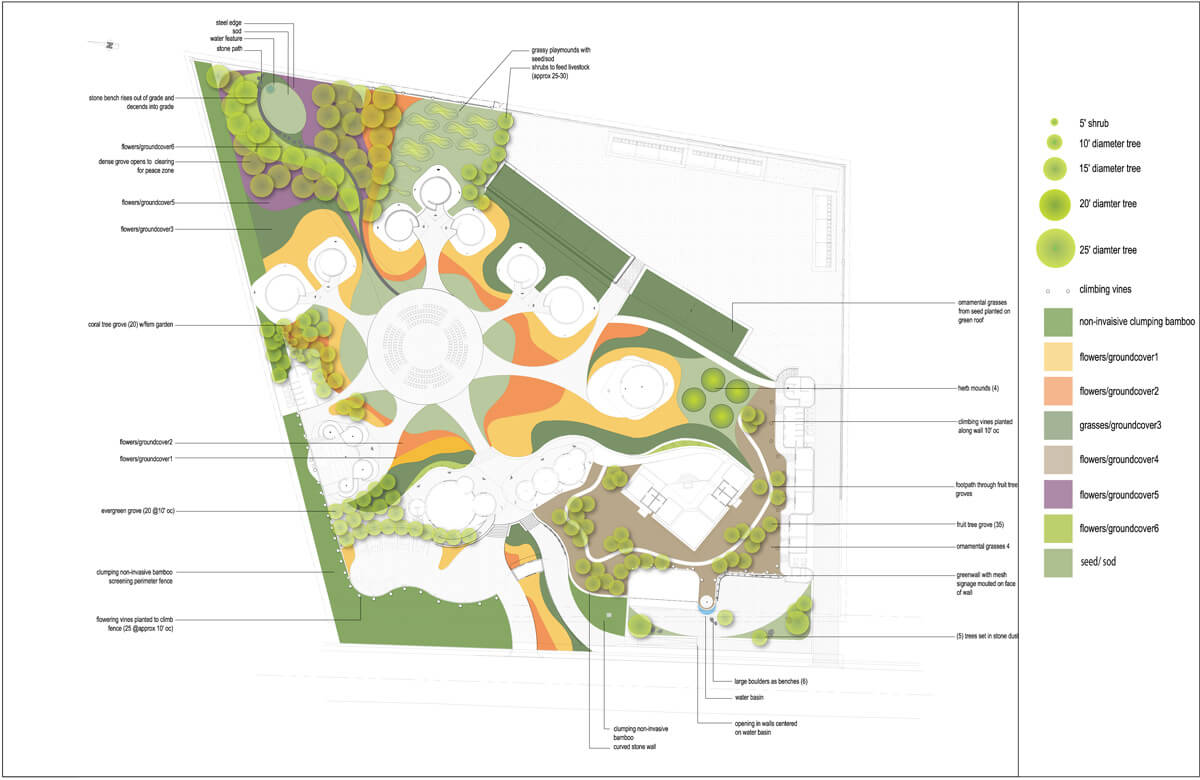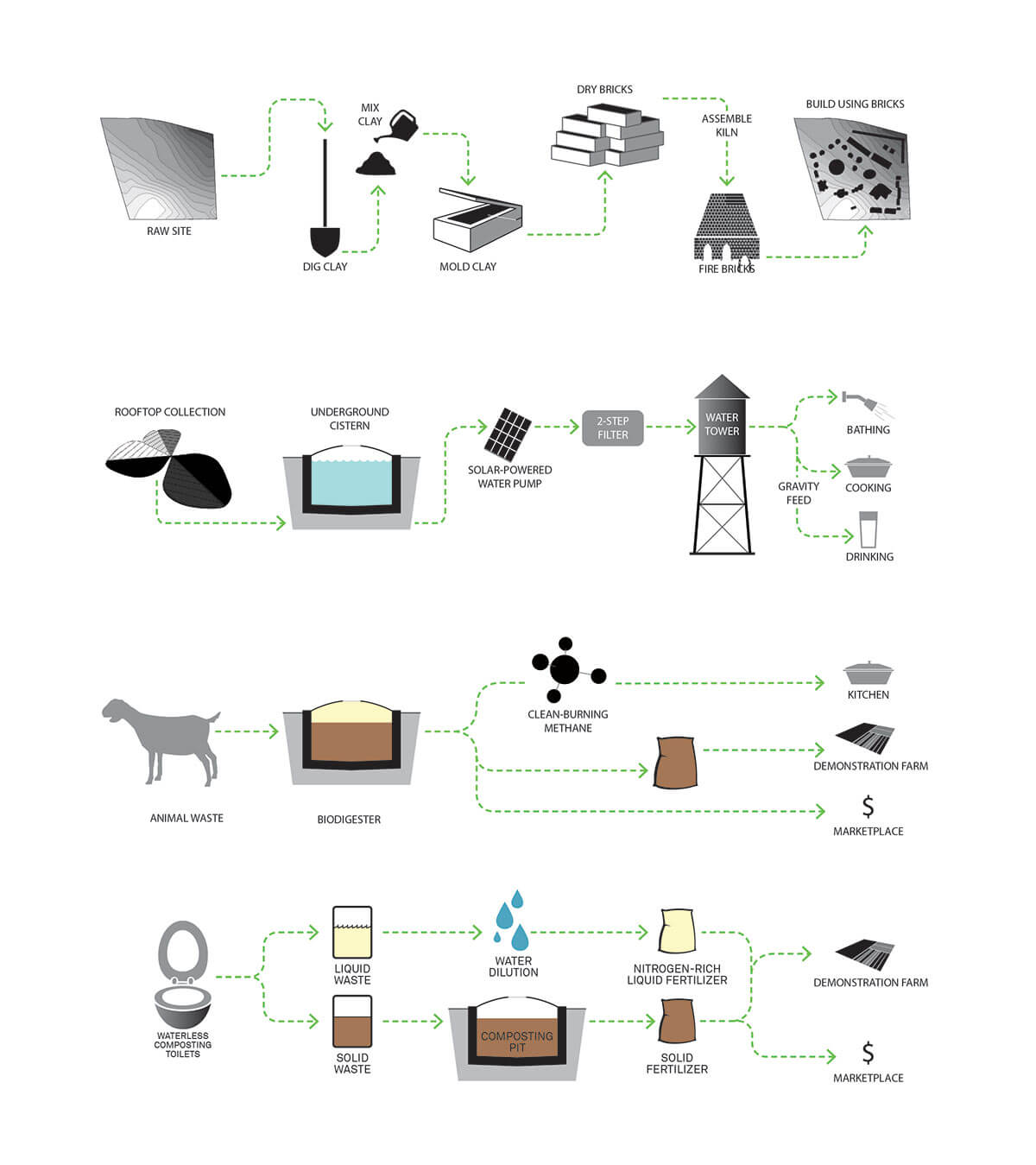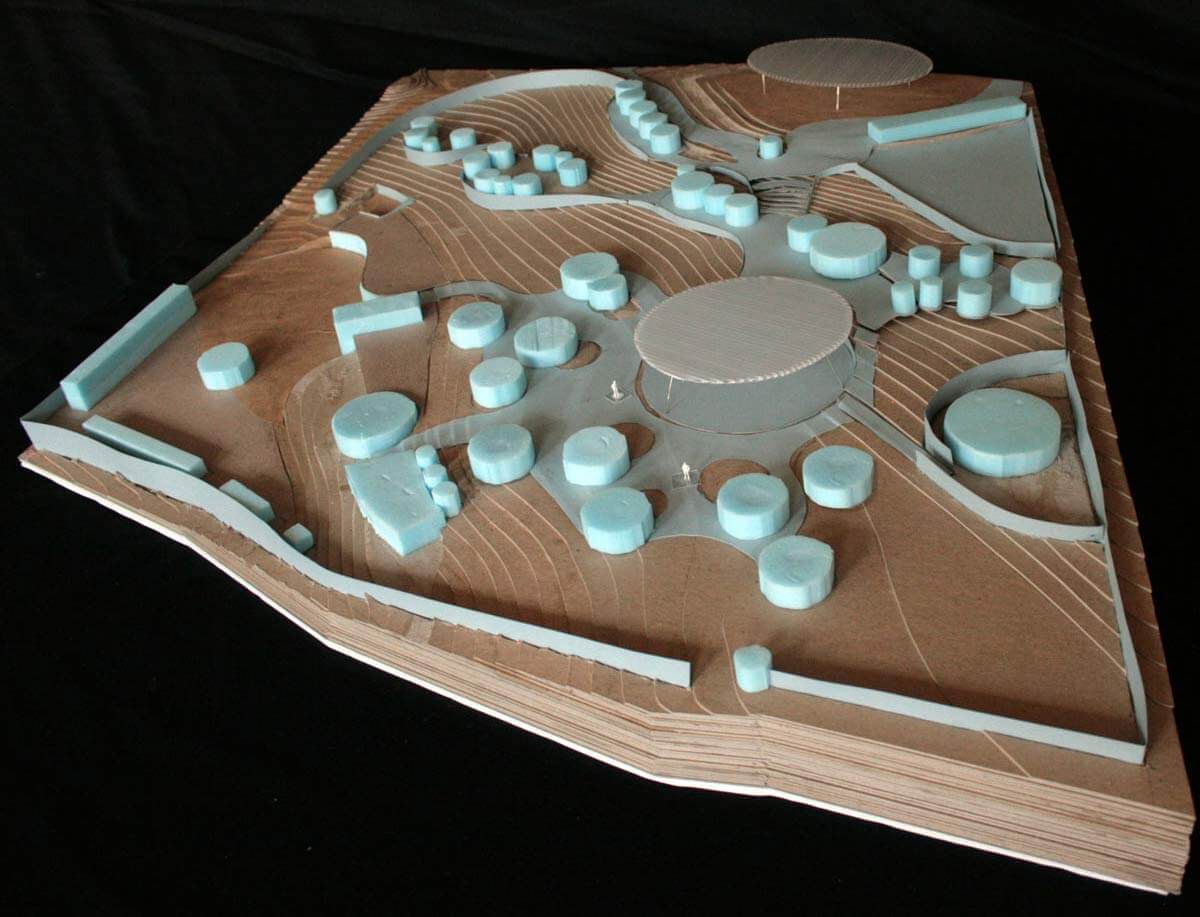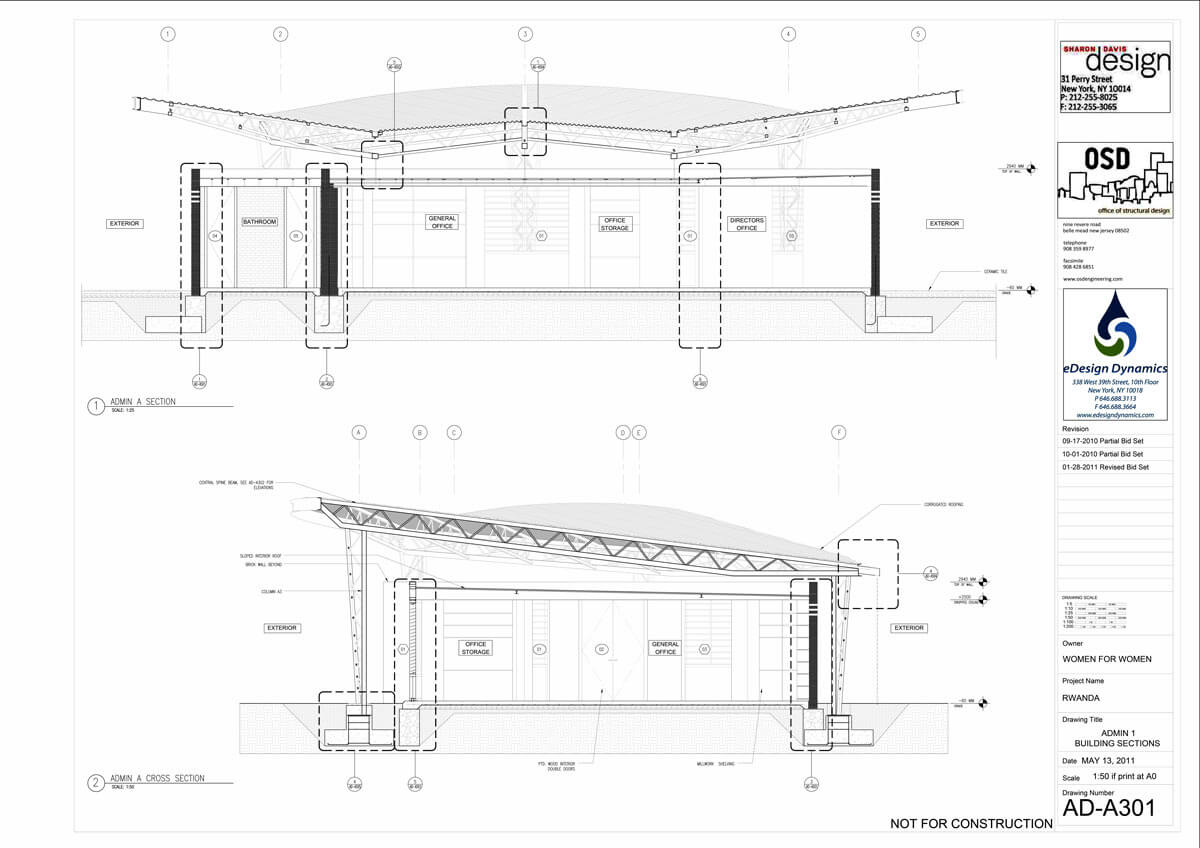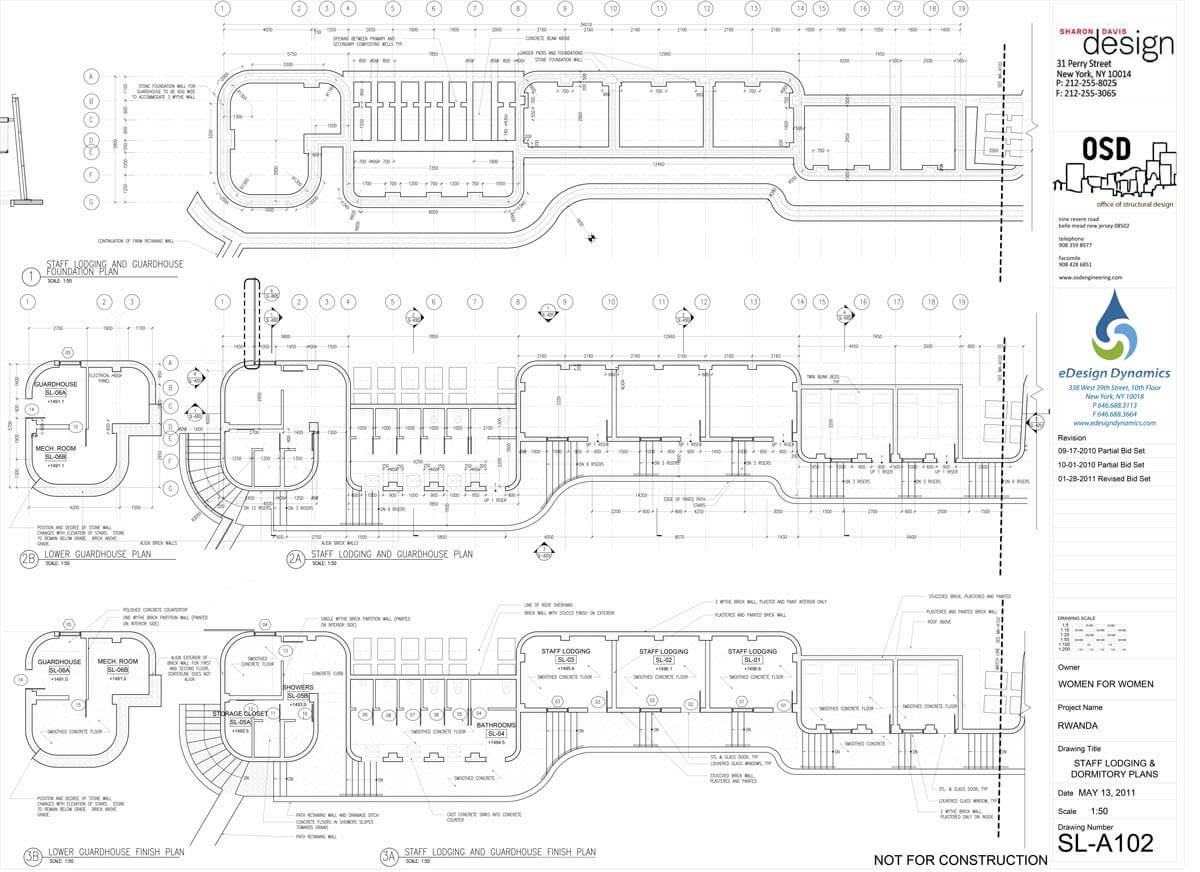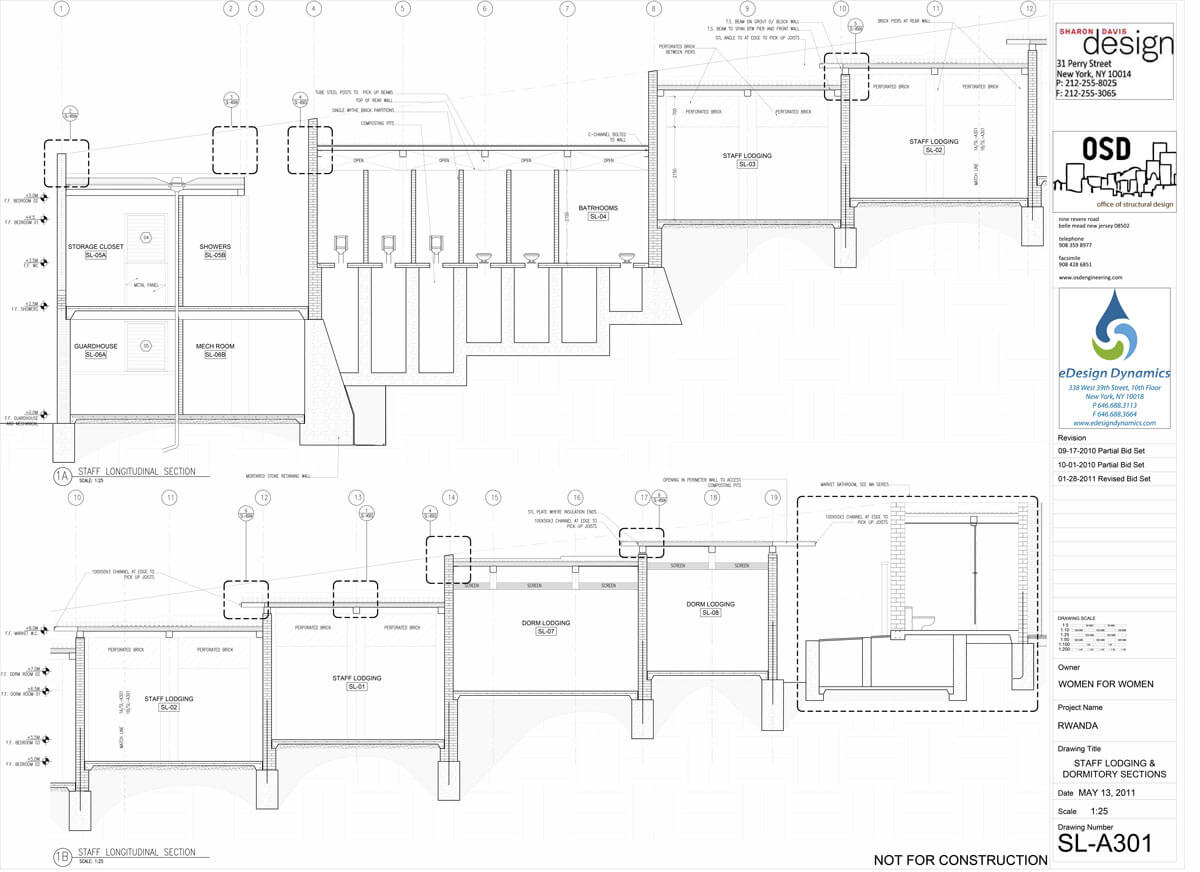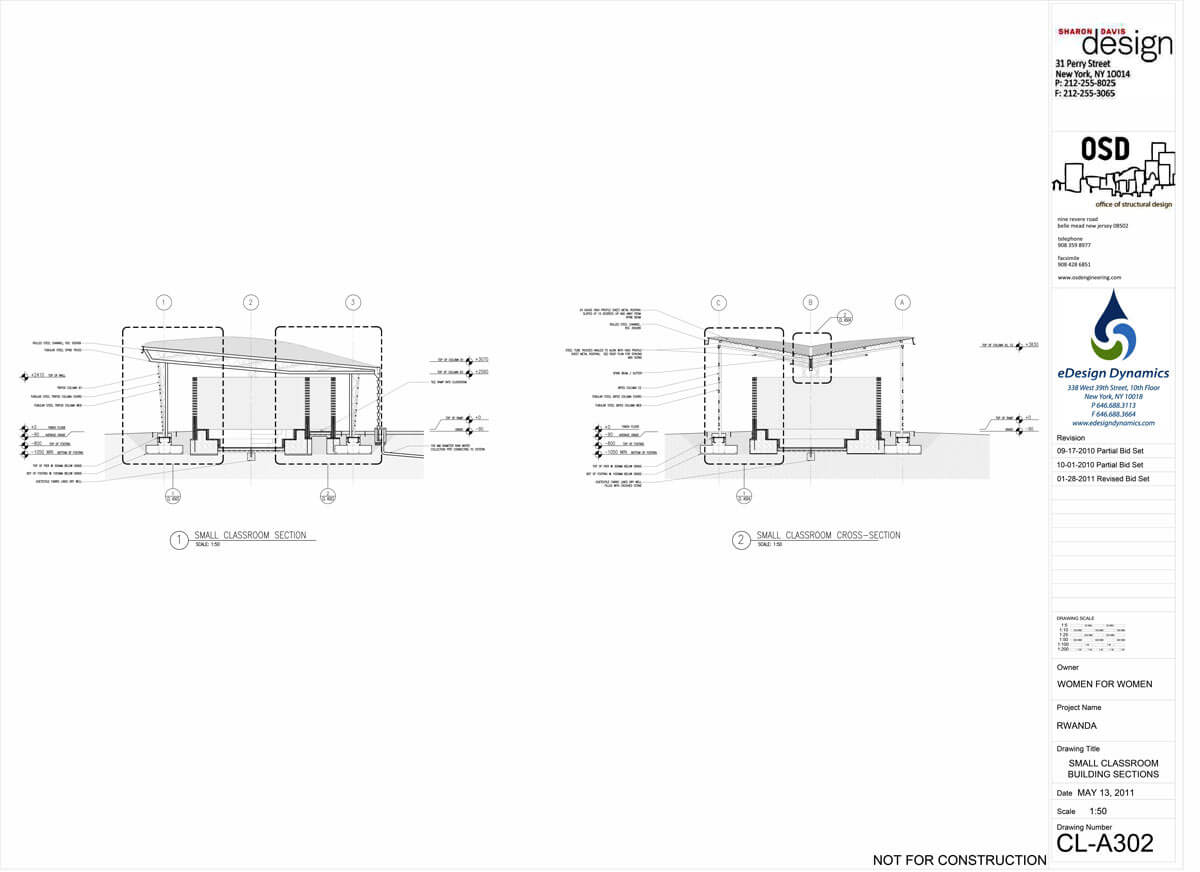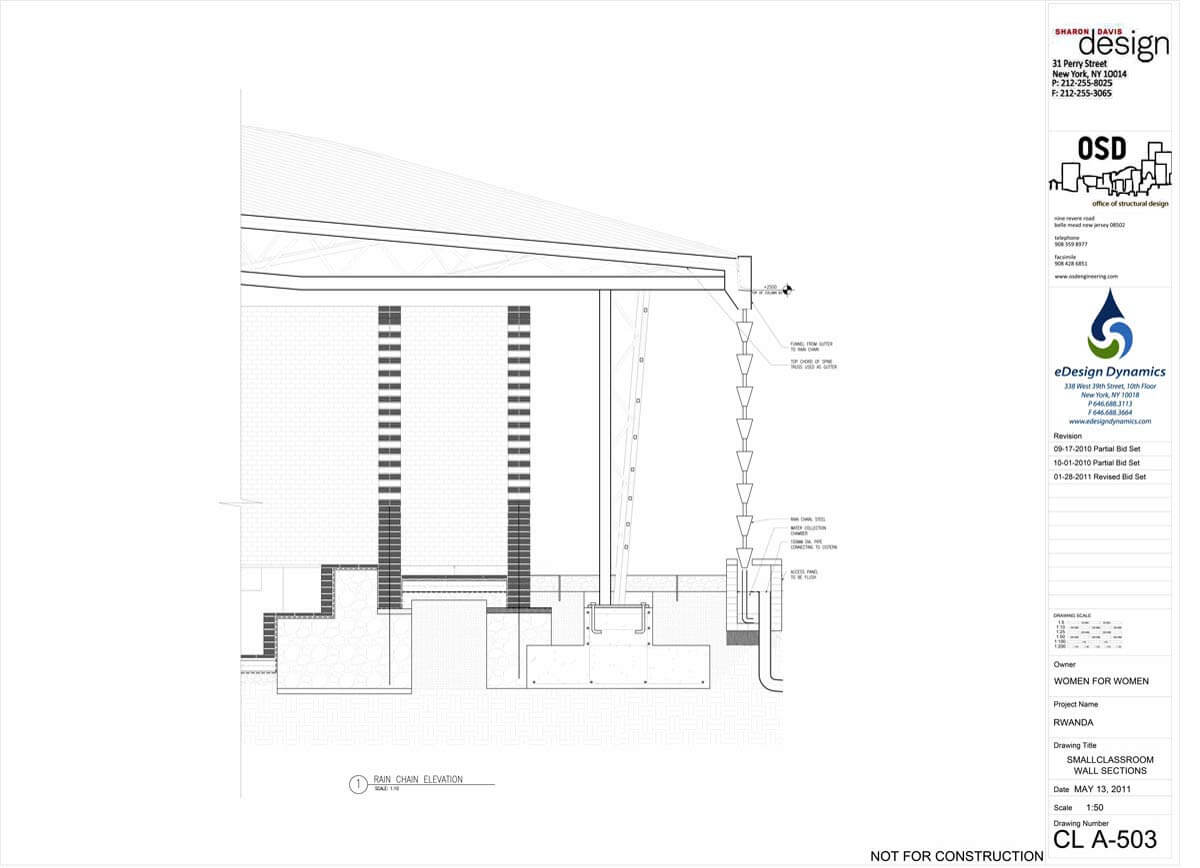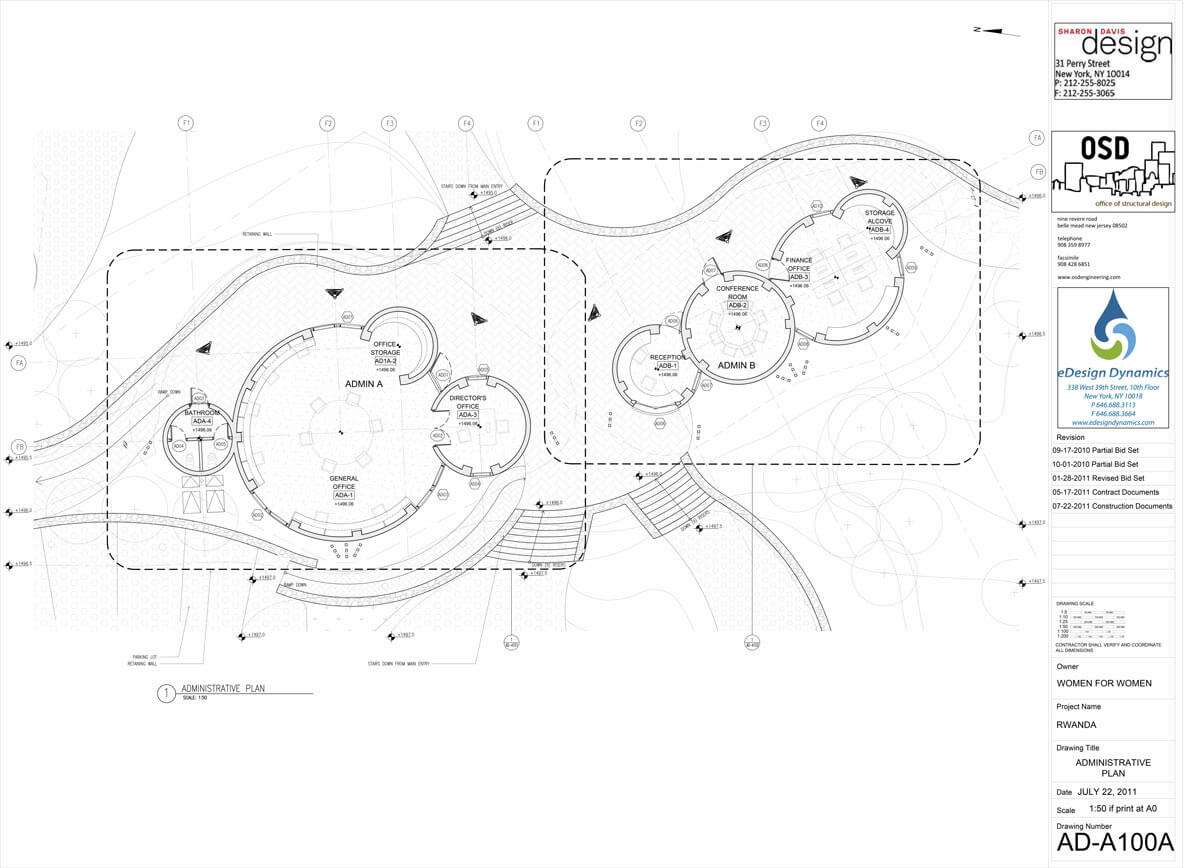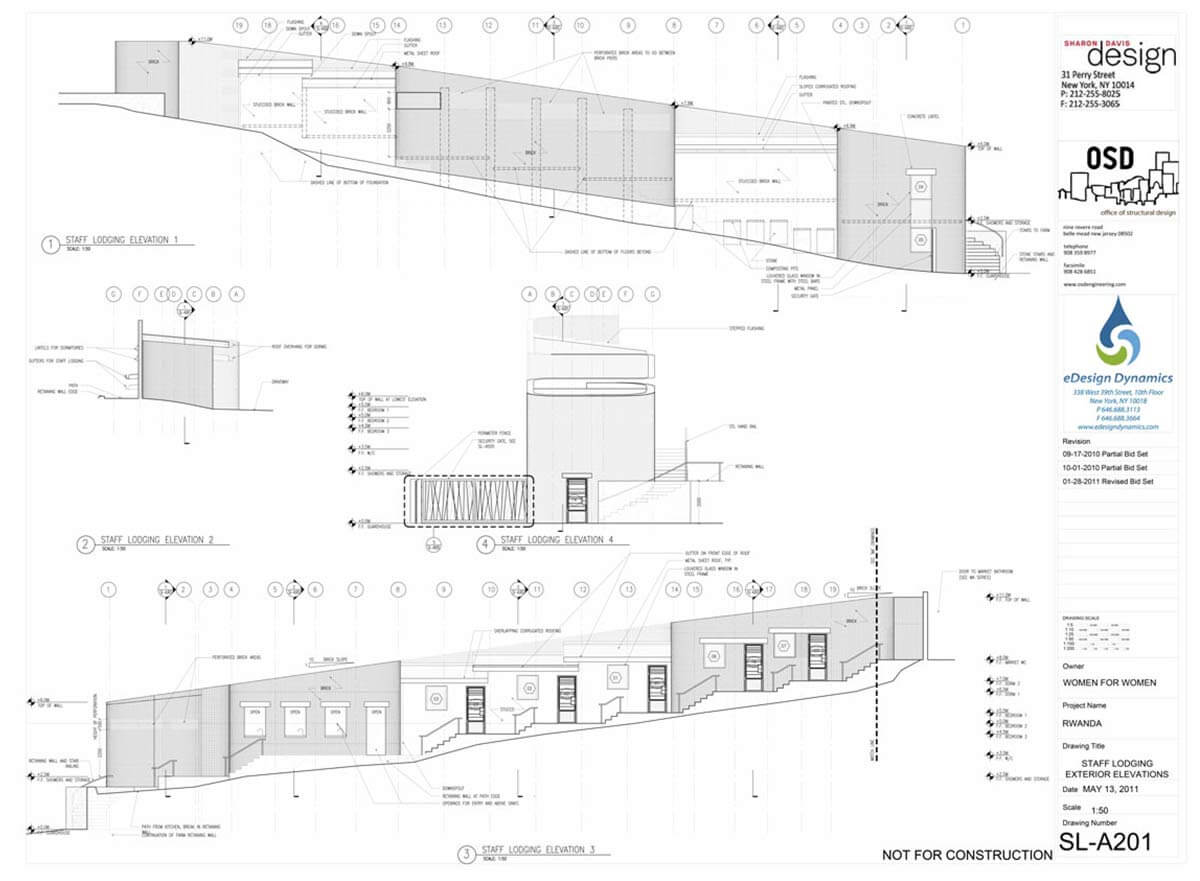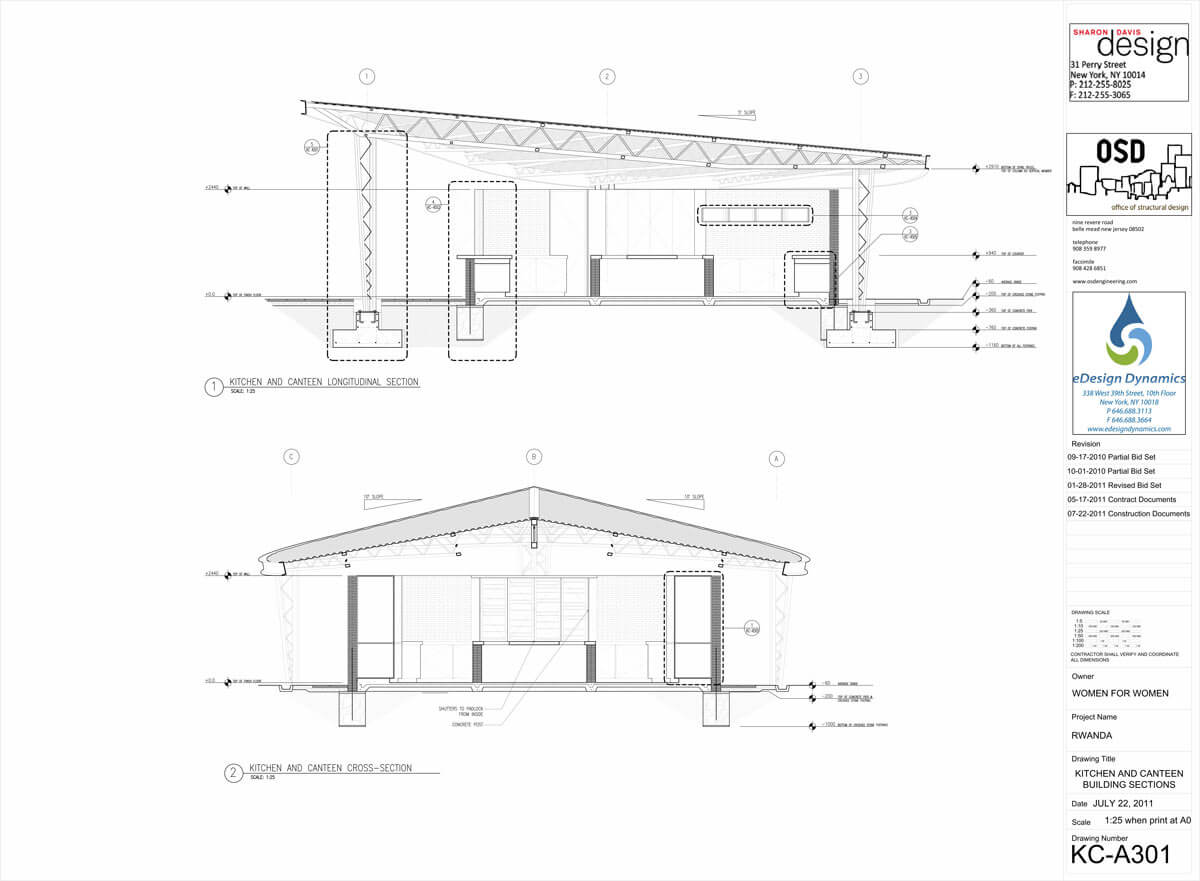Women’s Opportunity Center / Sharon Davis Design
Women’s Opportunity Center / Sharon Davis Design
Location
On a two-hectare site in Rwanda, the most densely populated country in Africa, the Women’s Opportunity Center is empowering one small community and, in turn, rewriting our role as designers. One hour from the Rwandan capital of Kigali, Kayonza is like much of this strife-torn nation: a place with few means but great promise. In this semi-rural setting, women dedicate their days to small subsistence farms, fetching fresh water, and scavenging wood for fuel.
Context
The site of the new Women’s Opportunity Center, located at a crossroads above a fertile valley, is an ideal arena for architecture that opens a new world of opportunity. We chose the idea of a vernacular Rwandan village as our organizing principle: a series of human-scaled pavilions clustered to create security and community for up to 300 women. Designed in collaboration with Women for Women International—a humanitarian organization that helps women survivors of war rebuild their lives—this mini-village transforms urban agglomeration and subsistence farming with an architectural agenda to create economic opportunity, rebuild social infrastructure, and restore African heritage.
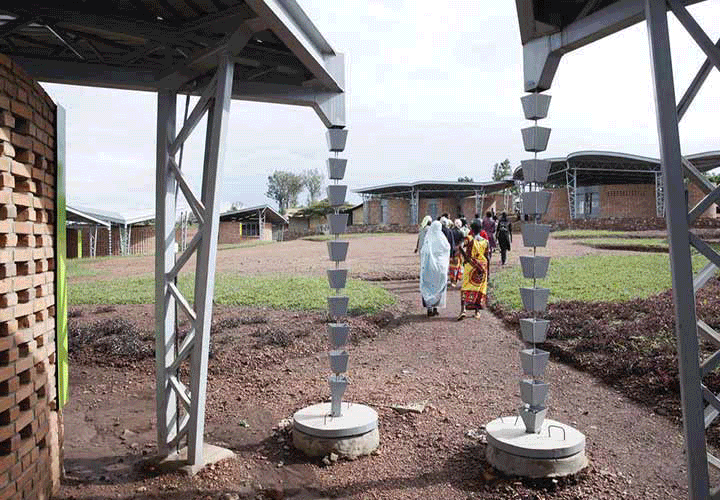
The design
Our design revives a lost Rwandan design tradition with deep spatial and social layers. Its circular forms radiate outward, from intimate classrooms at the center of the site to a community space, farmer’s market, and the civic realm beyond. The center’s circular structures are modeled after the historic King’s Palace in southern Rwanda, whose woven-reed dwellings were part of an indigenous tradition that the region had all but lost. Our design draws on the delicacy of this vernacular Rwandan construction method with rounded, perforated brick walls that allow for passive cooling and solar shading, while maintaining a sense of privacy. The design builds support for Rwanda’s social infrastructure through guest lodging facilities that allow donors and partner organizations to experience the Opportunity Center first-hand. These lodges serve as a conduit for initiatives that build one-to-one relationships between women in Kayonza and sponsors around the world, expanding the center’s social footprint through a sustaining global network.
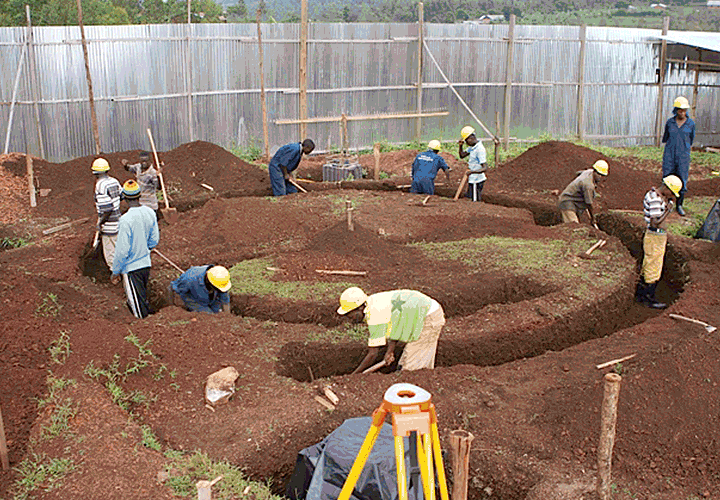
Bricks
Bricks were made on site by the center’s future users; in crafting the 450,000 clay bricks needed for construction – using materials found on site and a new, more durable manual press method we adapted from local building techniques – women are learning marketable, income-generating skills.
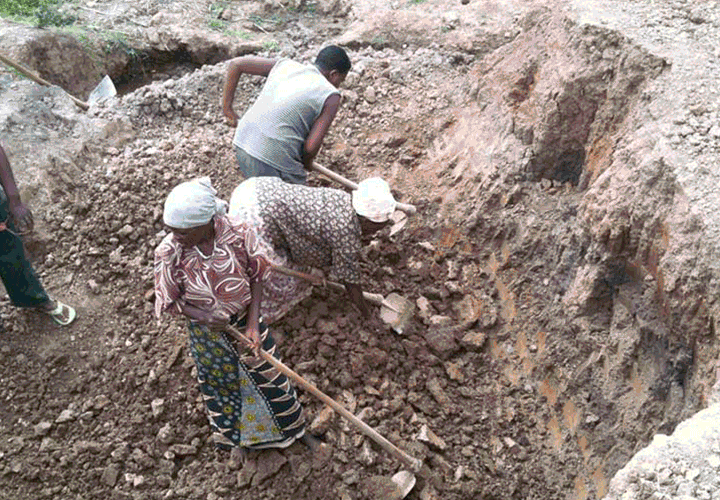
Description
The project also includes a demonstration farm that helps women produce and market their own goods. This Commercial Integrated Farming Initiative teaches women to produce income from the land through organic techniques geared toward commercial production. Through compact, easily maintained animal pens and classrooms— cooled by green roofs and retained earth walls—women learn to raise pigs, cows, goats, and rabbits, along with food storage and processing methods that can be used to run their own food cooperatives profitably. Set around an inviting plaza easily reached by motorists and public transit, a market showcases the center’s economic potential. Here, women sell food, textiles, baskets, and other products produced on site, as well as potable water harvested from the center’s rooftops. Market spaces can be rented to generate additional income, building a self-sufficient community network in Kayonza. We partnered with local enterprises to create water purification, biogas, and other sustainable systems that can be produced and maintained by the inhabitants themselves. For example, in place of pit latrines typically found in Rwanda – which pollute groundwater aquifers and are vectors for disease – we have designed simple, hygienic composting toilets that reduce water use while capturing nitrogen-rich solid and liquid waste. Our easily managed system naturally produces fertilizer that can nourish the farm or be sold as part of the site’s revenue-generating strategies.
The Women’s Opportunity Center empowers 300 women annually to transcend a legacy of conflict. As designers, it has empowered us to create an ethic of global collaboration—one that’s rapidly reshaping our practice. In the lives and stories of these women, we have found the locally inspired grounds for a globally resonant architecture of optimism.

Interior
Drawings
Extra info
Area:
2200.0 sqm
Project Year:
2013
Project Manager:
Bruce Engel
Designers:
Samuel Keller,Jeff Wandersman, Dong Ping Wong,
Damen Hamilton,Damen Hamilton,Molly Cronin, Laura Cheung
Structural Engineer:
Osd Engineering
Water Management Engineer:
Edesigndynamics
Landscape design:
XS Space and Susan Maurer (Julie Farris)
Water Mngmt Engineer:
eDesignDynamics
Water Filtration:
Manna Energy Ltd.
Composting toilets:
REC REC ASSOCIATION
Bio-gas Engineer:
CRET sarl
Rain Cisterns:
Water for Life
Solar Energy:
Great Lakes Energy
General Contractor:
Three Code Construction




